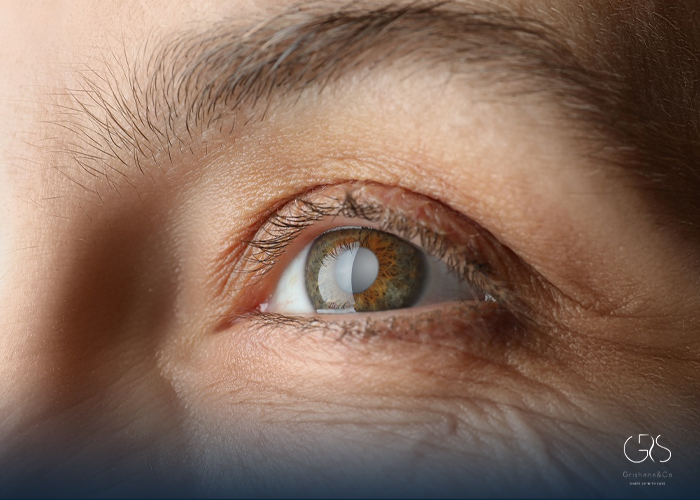Blurred vision is a common symptom that affects individuals of all ages. It refers to a condition in which objects appear hazy, unclear, or out of focus. While occasional blurry vision may not be a cause for concern, persistent or worsening blurriness should be evaluated by a healthcare professional. In this article, we will explore the common causes of blurry vision and discuss treatment options. We will also consider diverse perspectives to provide a comprehensive understanding of this condition. Relevant statistics from reputable sources will be included to support the information presented.
1.Refractive Errors:
One of the most common causes of blurry vision is refractive errors, which include myopia (nearsightedness), hyperopia (farsightedness), and astigmatism. These conditions occur when the shape of the eye prevents light from focusing directly on the retina, resulting in blurred vision. According to the World Health Organization (WHO), approximately 1.3 billion people worldwide have some form of vision impairment due to refractive errors.
Treatment options for refractive errors include prescription eyeglasses, contact lenses, and refractive surgeries such as LASIK (Laser-Assisted In Situ Keratomileusis). LASIK has gained popularity as a safe and effective option for correcting refractive errors and improving vision.
2.Cataracts:

Cataracts occur when the lens of the eye becomes cloudy, leading to blurry or foggy vision. They are typically associated with aging, but can also be caused by factors such as diabetes, smoking, and prolonged exposure to sunlight. According to the WHO, cataracts affect an estimated 65 million people globally.
The most effective treatment for cataracts is surgical removal of the cloudy lens and replacing it with an artificial lens. Cataract surgery is a common and successful procedure that restores clear vision for many individuals.
3.Dry Eye Syndrome:

Dry eye syndrome is a common condition that results from insufficient tear production or rapid evaporation of tears. It can cause dryness, irritation, and blurry vision. According to the American Academy of Ophthalmology (AAO), around 16 million adults in the United States suffer from dry eye syndrome.
Treatment options for dry eye syndrome include the use of artificial tears, prescription eye drops, lifestyle changes (such as avoiding dry environments and reducing screen time), and in some cases, blocking the tear ducts to retain moisture.
(To learn more about Causes Dry Eye please refer to this article)
4.Presbyopia:
Presbyopia is an age-related condition that affects the ability to focus on close objects, resulting in blurry vision when reading or doing close work. It commonly occurs in individuals over the age of 40. According to the AAO, presbyopia affects nearly everyone to some degree as they age.
Treatment options for presbyopia include reading glasses, bifocals, multifocal contact lenses, and corrective surgeries such as refractive lens exchange or monovision LASIK.
5.Diabetic Retinopathy:
Diabetic retinopathy is a complication of diabetes that affects the blood vessels in the retina. It can cause blurry vision, floaters, and if left untreated, lead to blindness. According to the National Eye Institute, approximately one-third of people with diabetes have some degree of diabetic retinopathy.
Treatment options for diabetic retinopathy include managing blood sugar levels, laser therapy to seal leaking blood vessels, injectable medications to slow down the progression of the disease, and in advanced cases, surgery.
6.Macular Degeneration:
Age-related macular degeneration (AMD) is a leading cause of vision loss in individuals over the age of 50. It affects the central part of the retina (macula) and can lead to blurred or distorted vision. According to the American Macular Degeneration Foundation, AMD affects more than 10 million Americans.
Treatment options for AMD vary depending on the type and severity of the condition. They may include medications (such as anti-VEGF injections that reduce abnormal blood vessel growth), laser therapy, photodynamic therapy, and vision rehabilitation services.
7.Glaucoma:
Glaucoma is a group of eye conditions that damage the optic nerve, often associated with increased pressure in the eye. It can cause peripheral vision loss, blurred vision, and eventually lead to blindness. According to the American Academy of Ophthalmology, glaucoma affects around 3 million Americans, and globally, approximately 78 million people are affected by the condition.
Treatment options for glaucoma aim to reduce intraocular pressure and prevent further damage to the optic nerve. They may include medications in the form of eye drops, laser surgery, or traditional surgery.
8.Medication Side Effects:
Certain medications, such as antihistamines, antidepressants, and high blood pressure medications, can cause blurry vision as a side effect. If blurry vision occurs after starting a new medication, it is important to consult a healthcare professional to discuss possible alternatives or dosage adjustments.
Conclusion:
Blurry vision can have various causes, ranging from minor issues to serious underlying conditions. It is crucial to seek medical advice if you experience persistent or worsening blurry vision. Early diagnosis and treatment can help prevent further vision loss and improve overall eye health. The treatment options for blurry vision are diverse and depend on the underlying cause. Regular eye exams play a critical role in maintaining eye health, especially for individuals with underlying health conditions like diabetes, who are at a higher risk of developing vision problems. By understanding the causes and treatment options for blurry vision, individuals can take proactive steps to protect their vision and overall well-being.
Sources
- World Health Organization (WHO), Vision impairment and blindness
- American Academy of Ophthalmology (AAO), Dry Eye Syndrome
- National Eye Institute, Facts About Diabetic Eye Disease
- American Macular Degeneration Foundation, Age-Related Macular Degeneration
- Glaucoma Research Foundation, Glaucoma Facts and Stats






